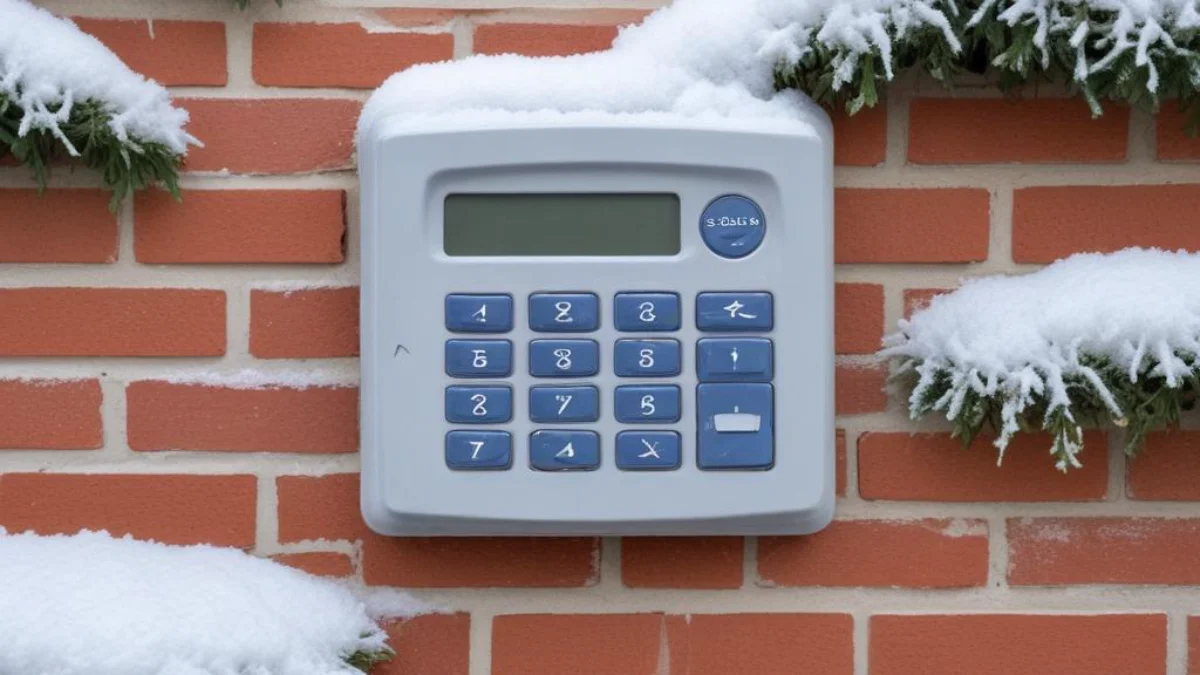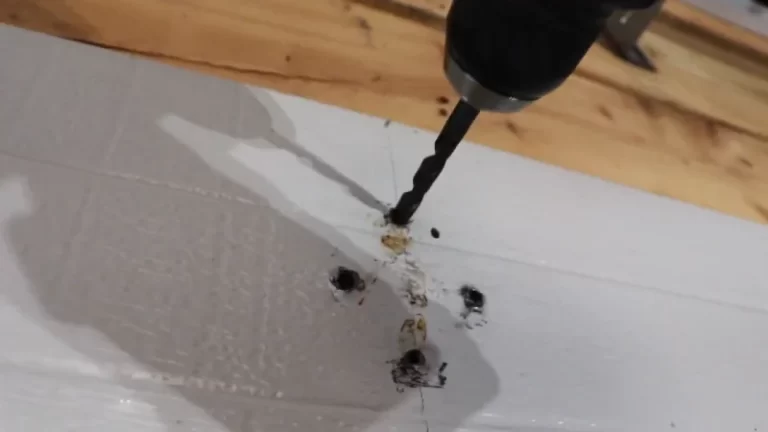Garage Keypad Not Working in Cold? Causes and Fixes Here!
There’s nothing more frustrating than pulling up to your home on a frigid day, tapping in your code, and getting… nothing. When your garage keypad is not working in cold weather, it can feel like your house is locking you out. You’re not alone in this chilly predicament; it’s a surprisingly common issue for homeowners in colder climates.
The convenience of a garage keypad is undeniable, but its exposure to the elements makes it vulnerable. Understanding why your keypad throws a tantrum in the cold is the first step toward a lasting solution. This comprehensive guide will walk you through the causes and provide actionable fixes to get your keypad back in working order, no matter how low the temperature drops.
You'll Learn About
Why the Cold Is Your Keypad’s Worst Enemy
Electronic devices and cold weather have a historically frosty relationship. The sensitive components inside your garage door keypad are no exception. When temperatures plummet, a cascade of issues can arise, leading to a frustrating lack of response.
The Primary Culprit: Battery Drainage
The number one reason for a keypad’s winter failure is a weakened battery. Cold temperatures significantly slow down the chemical reactions inside batteries that generate power. This reduced efficiency means the battery may not have enough juice to send a strong signal to the garage door opener’s receiver, even if it was working perfectly in warmer weather.
A battery that functions at 50% capacity on a mild day might drop to 20% or less in freezing conditions. This power drop is often just enough to prevent the keypad from communicating effectively with the main unit inside your garage.
Frozen Components and Moisture Intrusion
Your keypad lives outside, constantly exposed to rain, snow, and ice. Moisture is a significant enemy of electronics. When water seeps into the keypad’s housing and freezes, it can cause a host of problems.
Ice can form on the internal circuit board or between the buttons and their contacts, physically preventing an electrical connection when a button is pressed. This is why you might find the buttons feel stiff or unresponsive. Over time, this moisture can also lead to corrosion on critical components, causing permanent damage.

Metal Contraction and Wiring Issues
Physics plays a role as well. Just as bridges and roads contract in the cold, the tiny metal components and wires inside your keypad do the same. This contraction can lead to loose connections or even cause brittle, older wires to crack.
A hairline fracture in a wire or a slightly loosened connection might not be an issue in mild weather, but the contraction from the cold can be enough to interrupt the electrical circuit completely. This can result in an intermittent problem that only appears when the temperature drops.
Thickened Lubricants in the Garage Door Mechanism
Sometimes the keypad is working, but the garage door itself is the problem. The lubricant on your garage door’s tracks, rollers, and springs can thicken in the cold, becoming sluggish and sticky. This increased resistance can put a significant strain on the garage door opener’s motor.
If the motor struggles too much, it may not respond to the keypad’s signal, making it seem like the keypad is at fault. This is a mechanical issue that often gets misdiagnosed as an electronic one. It’s similar to how other machinery can have performance issues in the cold; for instance, some people notice their equipment having problems like a Briggs and Stratton leaking oil from the valve cover when temperatures fluctuate.
Step-by-Step Troubleshooting: Your Action Plan
Now that we’ve diagnosed the likely causes, it’s time to apply the fixes. Follow these steps methodically to identify and solve the problem without having to call a professional right away.
1. Start with the Simplest Fix: The Battery
Before you do anything else, replace the battery. This solves the problem more than 70% of the time. Even if you think the battery is new, the cold could have drained it prematurely.
When replacing it, opt for a high-quality lithium battery. Lithium batteries perform significantly better in cold weather than standard alkaline batteries. They maintain a more stable voltage output in freezing temperatures, providing the reliable power your keypad needs.
2. Inspect and Clean the Keypad
A thorough visual inspection and cleaning can work wonders. Look for any signs of physical damage, like cracks in the casing where moisture could get in. Clear away any snow, ice, or debris from the keypad’s surface.
Use a clean, dry cloth to wipe down the keypad. If buttons feel sticky, you can use a soft brush or compressed air to clean out the gaps between them. Dust and grime can accumulate and cause poor contact.
3. Address Frozen Components
If you suspect the keypad is frozen, you’ll need to gently thaw it. Never use force or boiling water. A hairdryer on a low heat setting, held several inches away, can effectively melt any internal ice buildup.
Once thawed, ensure the unit is completely dry. You can even apply a thin layer of petroleum jelly around the seams of the keypad cover to help create a moisture barrier for the future.
4. Check and Maintain the Door Mechanism
Don’t forget to check the door itself. Ensure the tracks are clear of any ice or obstructions. Apply a silicone-based or lithium grease lubricant specifically designed for garage doors to the rollers, hinges, and springs.
These specialized lubricants are formulated to resist thickening in low temperatures, ensuring your door moves smoothly. If the door operates smoothly manually, you can rule out mechanical resistance as the cause of the problem.
5. Reset and Reprogram the Keypad
If a new battery doesn’t work, a reset might be necessary. Power surges or a battery that was dead for too long can sometimes cause the keypad to lose its programming. The process is usually straightforward.
Typically, you’ll press a “Learn” button on the garage door opener motor unit inside the garage. After pressing it, you’ll have a short window (usually 30 seconds) to enter your new PIN on the keypad and press “Enter.” Always consult your owner’s manual for the specific steps for your model.
Preventative Maintenance for a Winter-Proof Keypad
The best way to fix a problem is to prevent it from happening. A little seasonal maintenance can save you a lot of cold-weather headaches. It’s as important as other seasonal home checks, like investigating why you hear your roof popping when temperatures change.
Seasonal Battery Replacement
Make it a habit to replace your keypad battery every fall before the cold weather sets in. This proactive step ensures your keypad has a fresh, powerful energy source to combat the temperature drop. Using a lithium battery will provide the best performance.
Weatherproofing Your Keypad
Consider adding a protective cover over your keypad. Many manufacturers sell weather-resistant covers designed to shield the unit from direct exposure to rain, snow, and ice. This can significantly reduce moisture intrusion.
Applying a bead of clear silicone caulk around the base of the keypad where it meets the wall can also prevent water from seeping in from behind. Ensure the keypad’s own cover closes securely to protect the buttons.
Regular Lubrication Schedule
Lubricate the moving parts of your garage door at least twice a year—once in the spring and once in the fall. This keeps the mechanism operating efficiently and reduces the strain on the opener motor, which is especially important during winter.
When to Call in the Professionals
If you’ve tried all the troubleshooting steps and your keypad still isn’t working, there might be a more complex issue at play. It could be a faulty circuit board, damaged wiring, or a problem with the garage door opener’s receiver.
In these cases, it’s best to contact a qualified garage door technician. They have the diagnostic tools and expertise to pinpoint the exact problem and perform a safe and effective repair. Attempting complex electrical repairs yourself can be dangerous and may cause more damage.
Upgrading Your System
If your keypad is over ten years old, it might simply be at the end of its life. Technology has improved, and newer models are often designed with better weather resistance. Upgrading to a modern, weatherproof keypad can be a wise investment for long-term reliability.
Some modern keypads even offer smart features, allowing you to control your garage door from your phone, which can be a great backup if the keypad fails. Products like the myQ Smart Garage Video Keypad offer enhanced features and are built to withstand colder operating temperatures.
| Problem | Common Cause | Quick Fix Solution | Long-Term Prevention |
|---|---|---|---|
| Keypad is completely unresponsive, no lights. | Dead or weak battery due to cold. | Replace the battery with a new lithium battery. | Replace battery every fall before winter arrives. |
| Buttons light up but door doesn’t move. | Weak signal, lost programming, or door mechanism resistance. | Reprogram the keypad. Check door for obstructions and lubricate moving parts. | Regularly lubricate door tracks and springs. |
| Buttons are physically stuck or hard to press. | Ice or debris is trapped under the buttons. | Gently thaw with a hairdryer on low. Clean between buttons with a soft brush. | Install a protective weather cover over the keypad. |
| Keypad works intermittently in the cold. | Metal contraction causing loose wiring or a failing component. | Check internal wiring for loose connections. May require professional inspection. | Consider upgrading to a newer, more weather-resistant keypad model. |
Final Thoughts on Beating the Cold
A garage keypad that fails in the cold is a major inconvenience, but it’s usually a problem with a simple solution. By starting with the most common culprit—the battery—and working your way through cleaning, maintenance, and reprogramming, you can often solve the issue yourself.
Remember that proactive maintenance is your best defense against winter woes. A little preparation in the fall can ensure you have reliable access to your garage all winter long, no matter how low the thermometer dips. Just as you’d choose the right equipment for a lawn care debate like Qwikchute vs. Grass Flap, choosing the right battery and performing regular upkeep is key to performance.
Don’t let the cold win. With these causes and fixes in your toolkit, you’ll be well-equipped to keep your garage keypad working flawlessly, ensuring a warm and welcome entry to your home every time.

